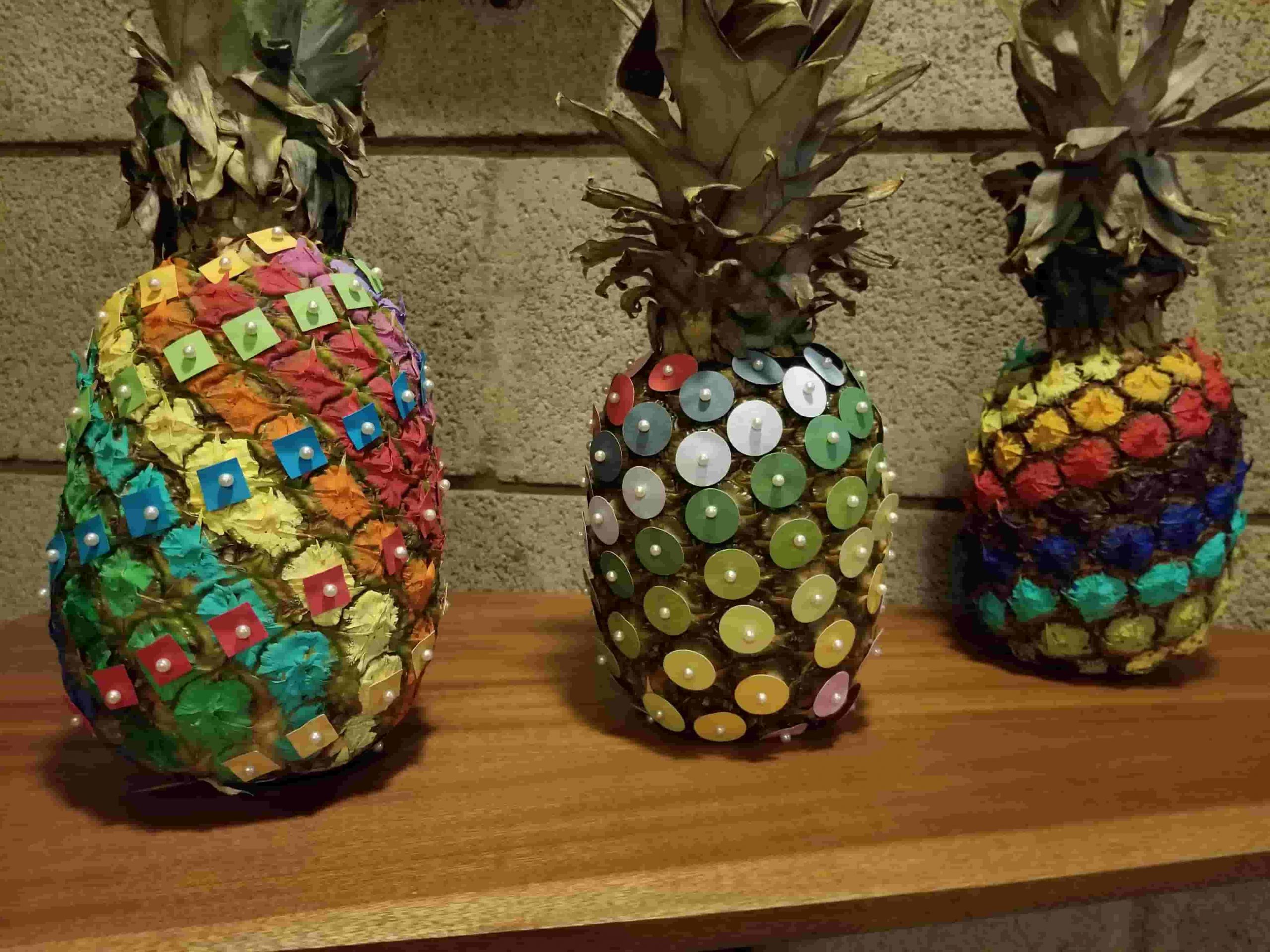What I most regret about my schooling at the Abbey CBS some forty-odd years ago was my involuntary exclusion from the Science curriculum. When we were taught mathematics then ….
(a closely related discipline), it was an artificial construct and no effort was made to relate it to science and nature. Thankfully this has been righted for our grandchildren.
Pineapple Fibonacci Number Sequence
The mathematical regularity (and indeed, irregularity, chaos theory and how it applies to weather patterns and cloud shapes, to give but two examples) of nature fascinates me. Numbers are everywhere – in shapes and ratios – and there is always a logical explanation for any given pattern of numbers. In the majority of cases in the living world, this is related to evolution. Genetic influences have enormous flexibility but physics, chemistry and dynamics produce mathematical regularities in nature and all are an essential part of evolution which has given us today’s great variety. Let us look at a few examples.
The majority of plants have a number of petals taken from the series 3,5,8,13,21,34,55,89. These are called Fibonacci numbers after an Italian mathematician who recognised the series and applied it to solve a problem about the growth of a population of rabbits, some 800 years ago! Each consecutive number is the sum of the two preceding numbers. Now if you look at a giant sunflower you will find a remarkable pattern of florets in its head. The florets are arranged in two intersecting families of spirals, one winding clockwise the other anti-clockwise (like the pineapple, pictured here). In some sunflower species there are 34 clockwise, and 55 anti-clockwise. The precise numbers depend on the species of sunflower but you often get 34/55, or 55/89 or even 89/144, the next Fibonacci number still. The pineapple has eight rows of scales, the diamond-shaped markings, sloping to the left and thirteen sloping to the right.
It would be fascinating to learn how Fibonacci numbers got turned into DNA codes and why those particular numbers, to yield that unique geometrical arrangement. At the tip of a shoot of a growing plant you can detect the parts from which all the main features – leaves, petals, sepals, florets – develop. Around the apex one by one tiny lumps – called primordial – form. Each primordium grows away from the apex and eventually the lump develops into a leaf etc. Successive primordial are spaced rather sparsely along the tightly-wound spiral called the generative spiral. The essential qualitative feature is the angle between successive primordia and this too is related to Fibonacci numbers!
Successive angles (drawn from the centres of successive primordial to the centre of the apex) are fairly equal and their common value – 137.5˚ – is called the divergence angles. Form a fraction by dividing two successive numbers in the Fibonacci series (e.g. 34/55) and multiply by 360˚ (angles in a circle) to get 222.5˚. Since this is more than 180˚ (a straight line) we must measure in the opposite direction – or equivalently, subtract it from 360˚ – and the result is 137.5˚. The ratio of consecutive Fibonacci numbers (that first division above 34/55 or 55/89) gets closer and closer to 0.618034. The limiting value is half of ( √5 -1) the golden number. And the angle between successive primordial is the ‘golden angle’ of 360˚ (1-Φ) ˚ = 137.5˚ (where Φ is (√5 -1)/2).
How does this explain the number of petals, or in other words what is this inter-relationship of Fibonacci numbers? Well, basically you get one petal at the outer edge of each spiral! And why this pattern? Because it is the most efficient possible in nature to pack the greatest number of seeds in the smallest confined space. This increases the chances of survival of that plant (and that species). Any other angle would leave gaps and the primordial wouldn’t pack so efficiently. You need an irrational number – a multiple that is not an exact fraction and the most irrational number is the golden number.
All these terms – not to mention the related concepts – were alien to me as a teenager, not having been given a related context. It’s different when you see that they all have their place – a central and essential place – in nature.
Which variables did nature start with? Is it all part of a grand design?
Take your pick! But if Todd Sweeney had brought all this to my attention at Junior Certificate level (when he taught us elementary algebra, geometry etc and logic) I think I’d have had an entirely different adult career!
Got to our homepage for more fun stuff and Newry news!
